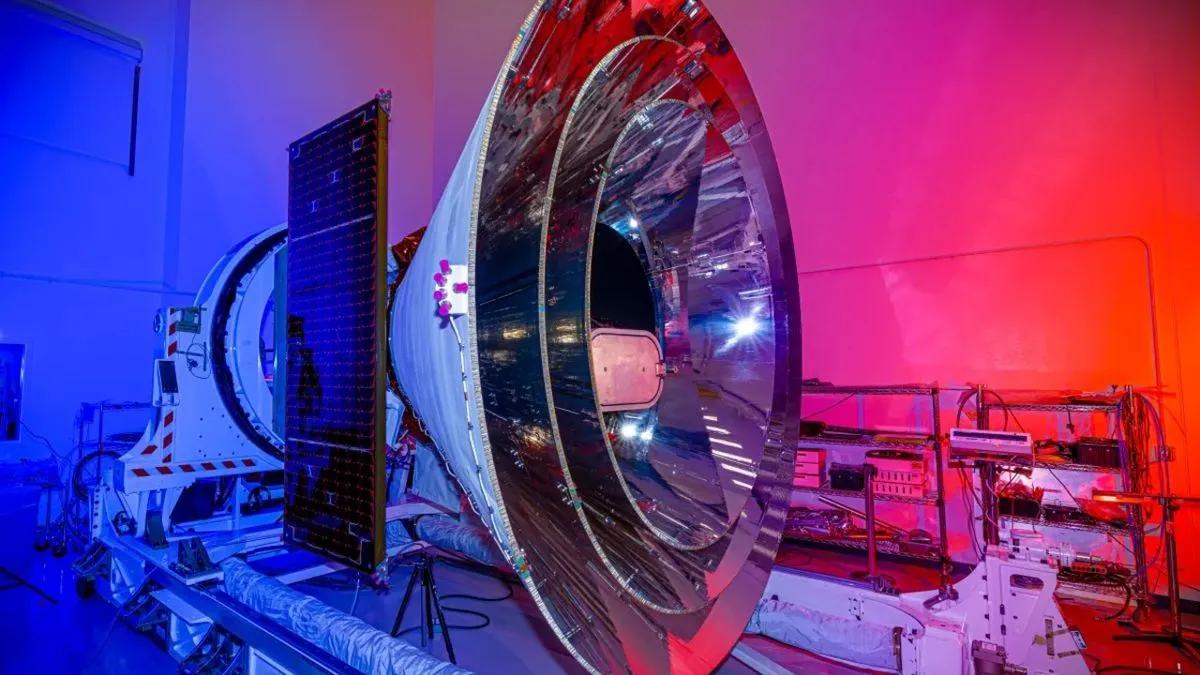
This week, Earth will welcome a new robotic companion as NASA prepares to launch its latest space telescope, SPHEREx — the Spectro-Photometer for the History of the Universe, Epoch of Reionization and Ices Explorer. The launch is scheduled for Friday, February 28, from the Vandenberg Space Force Base in California, aboard a SpaceX Falcon 9 rocket.
With a budget of $488 million, the mission is designed to map the entire sky in 3D, capturing wavelengths invisible to the human eye. Over a period of two years, SPHEREx aims to provide a comprehensive view of more than 450 million galaxies and over 100 million stars in the Milky Way. According to NASA, this mission will create a detailed catalog of all objects emitting radiation in the universe, even those too distant or small to be observed by other telescopes.
The data collected by SPHEREx is expected to answer fundamental questions about the universe. Scientists are eager to understand why the large-scale structure of the universe appears as it does, how galaxies form and evolve, and the origins of water and other essential life ingredients in our galaxy. This broad, all-encompassing perspective is crucial for addressing these questions.
SPHEREx is a testament to achieving significant scientific discoveries with a relatively small telescope. Beth Fabinsky, the deputy project manager of SPHEREx at NASA's Jet Propulsion Laboratory in California, emphasized the mission's potential last month. Once in Earth orbit, SPHEREx will perform a series of precise maneuvers to image specific pockets of the sky for several days. This strategy will enable the probe to map the entire sky twice a year.
Weighing around 1,100 pounds (500 kilograms), SPHEREx is roughly the size of a grand piano and uses 270 to 300 watts of power, equivalent to less than a refrigerator. It generates more power than necessary through a robust solar array, similar to those found on residential rooftops.
A primary science goal of SPHEREx is to deepen our understanding of cosmic inflation, the rapid expansion of space within the first second after the Big Bang. By cataloging the distribution of hundreds of millions of galaxies, SPHEREx will contribute to our understanding of the statistical distribution of ripples—tiny variations in matter—imprinted in the universe's large-scale structure.
Equipped with a prism-like spectrophotometer, SPHEREx can split light into 102 colors, allowing it to identify the unique signatures of basic life molecules frozen in interstellar clouds. By cataloging the location and abundance of these icy molecules, scientists hope to gain insights into how key ingredients for life, including hydrogen, oxygen, nitrogen, carbon, and sulfur, are distributed in interstellar space and delivered to regions where planets form.
"I expect the unexpected to come out of the data for this mission," said James Fanson, the project manager of SPHEREx, in an interview with NPR.
SPHEREx will not be launching alone; it shares the Falcon 9 rocket with another NASA mission, PUNCH (Polarimeter to Unify the Corona and Heliosphere). PUNCH will use four satellites to study the heliosphere, the vast bubble of magnetic fields and charged particles emitted by the sun.